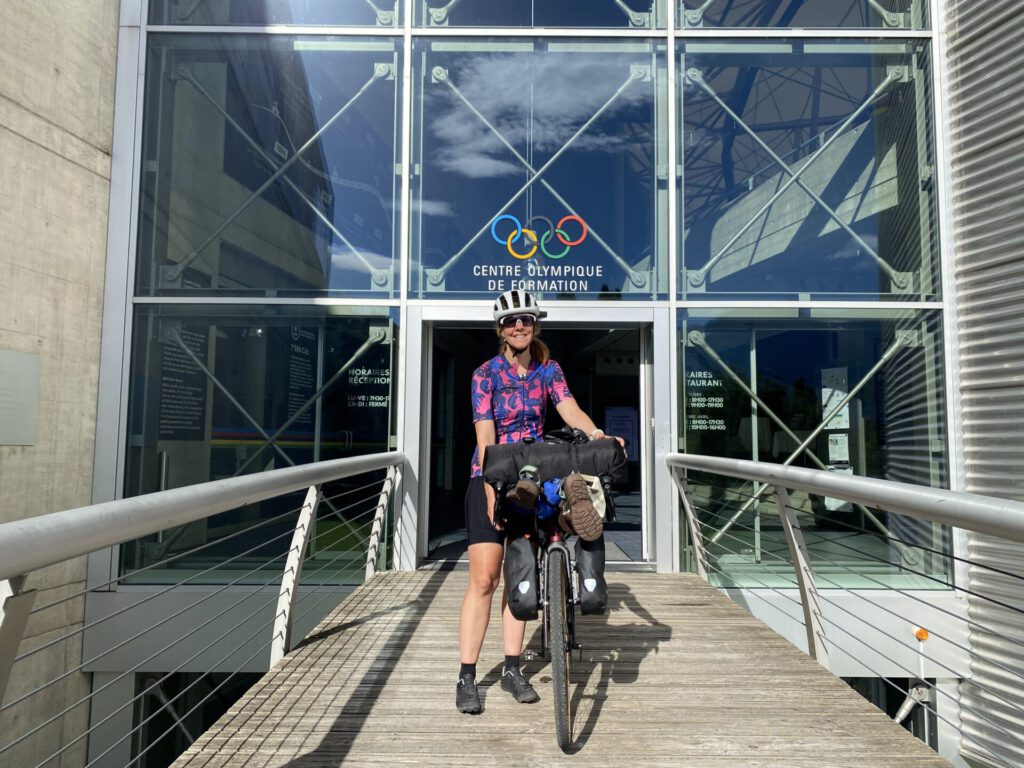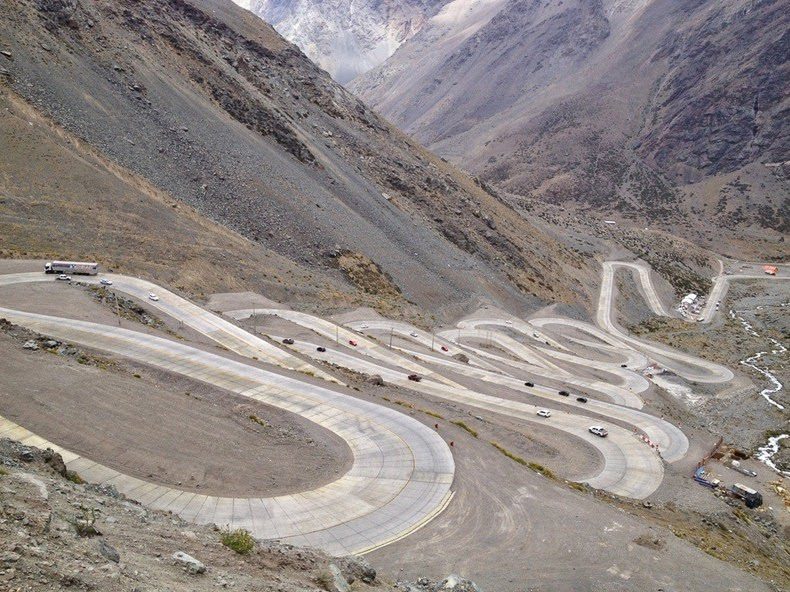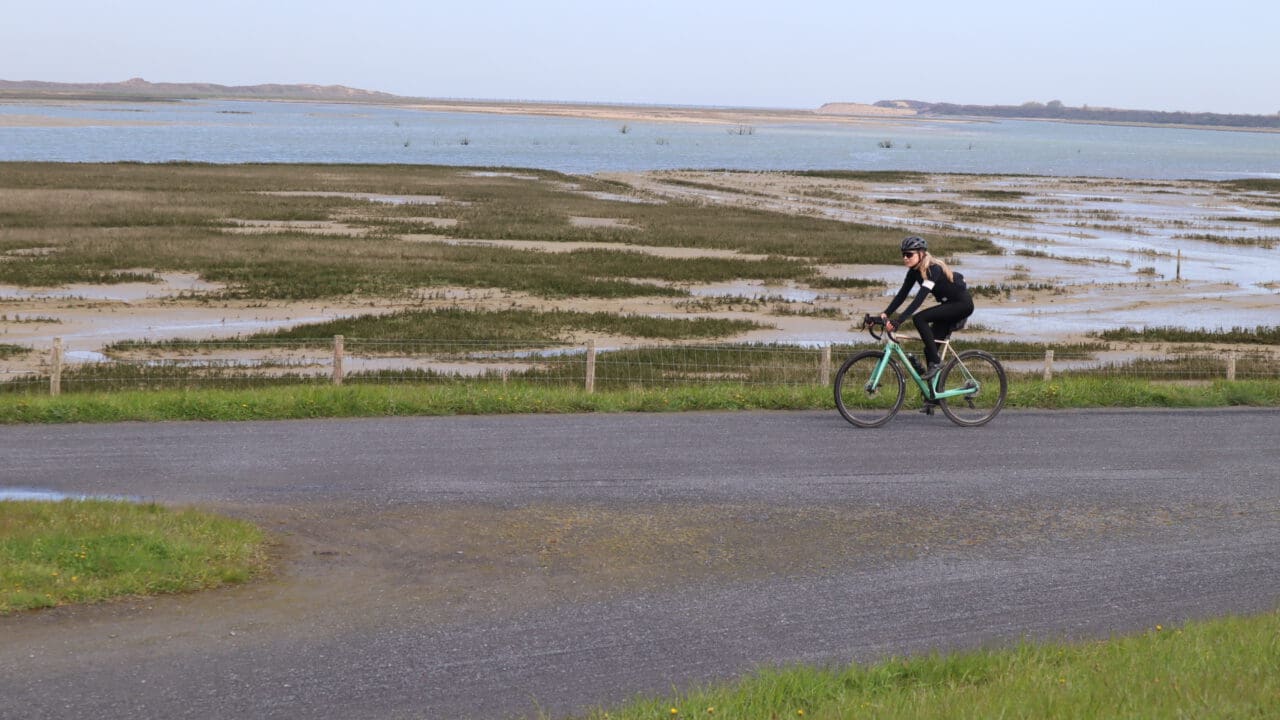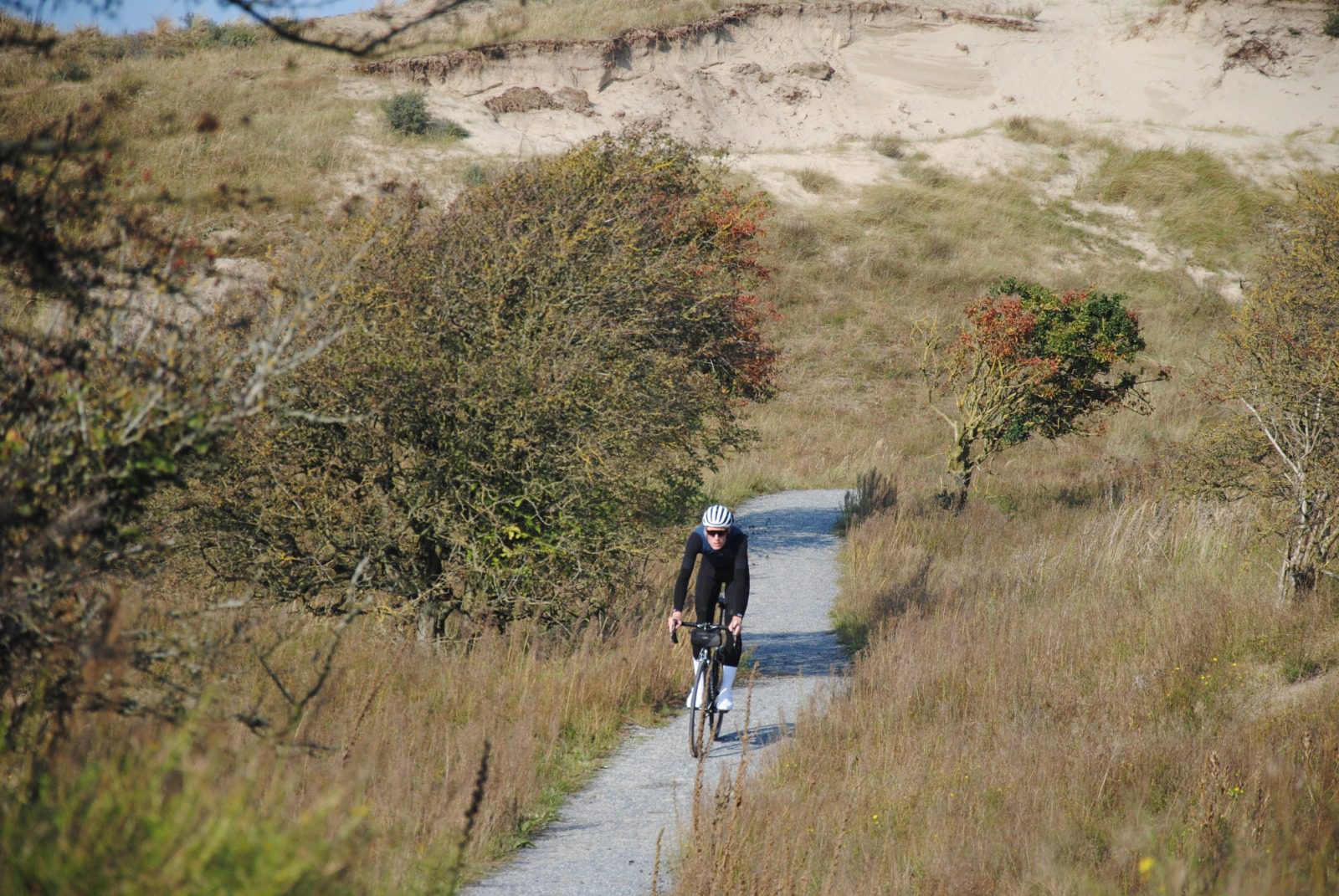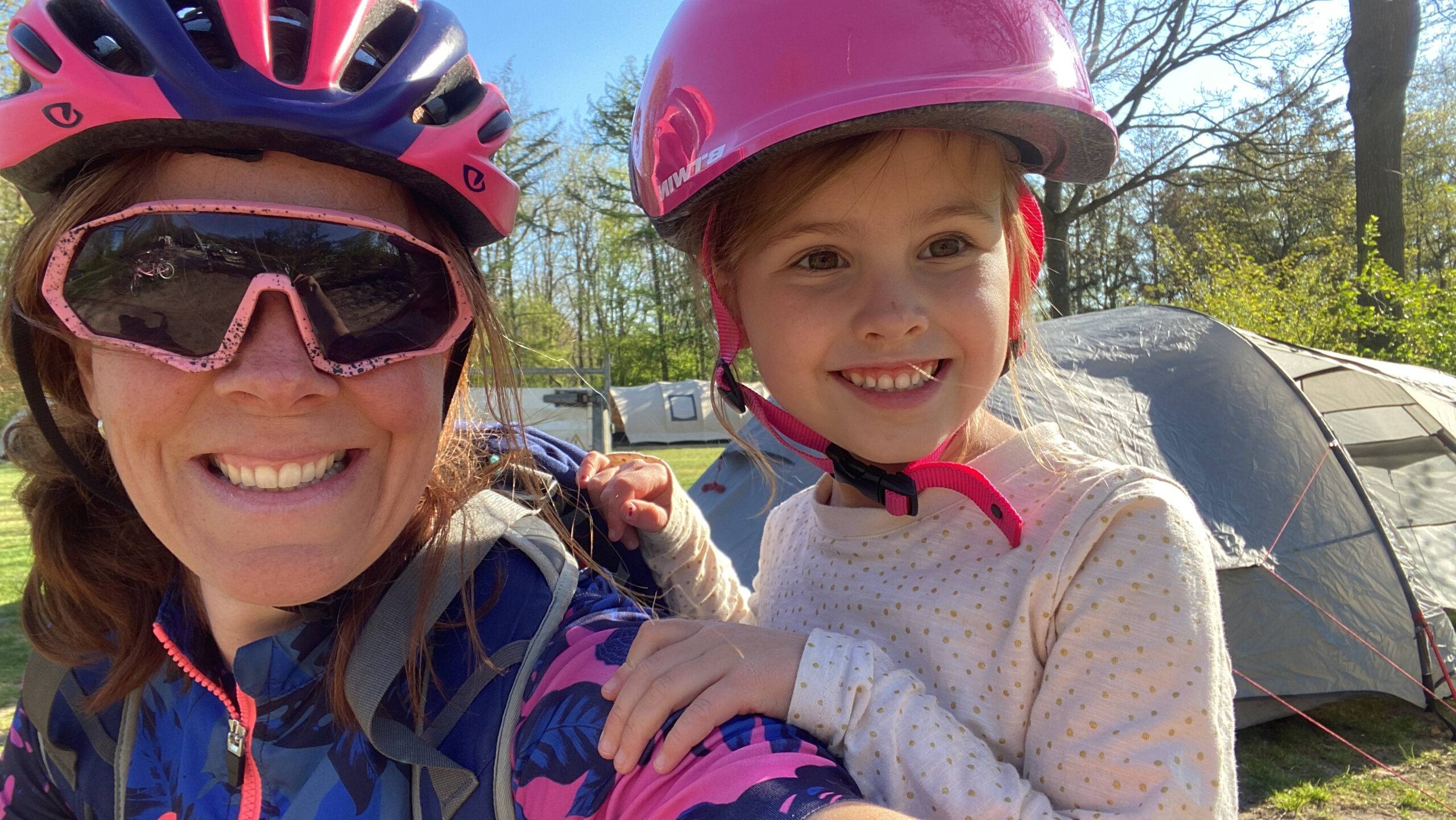If you want to cycle a multi-day trek through the mountains and camp along the way, it is Switzerland a perfect destination. Switzerland has no fewer than nine national long-distance routes, divided into several stages. So if you plan to bikepack in Switzerland, your adventure starts on the Schweizmobil website. Using Schweizmobil and Komoot, you can plan the most beautiful cycling tours. With the Premium version of Komoot, you can easily plan tours lasting several days and also search for places to stay overnight. For my tour, I combined parts of the Rhine route 2 and the Rhone route 1. Both routes are very well signposted along the way.
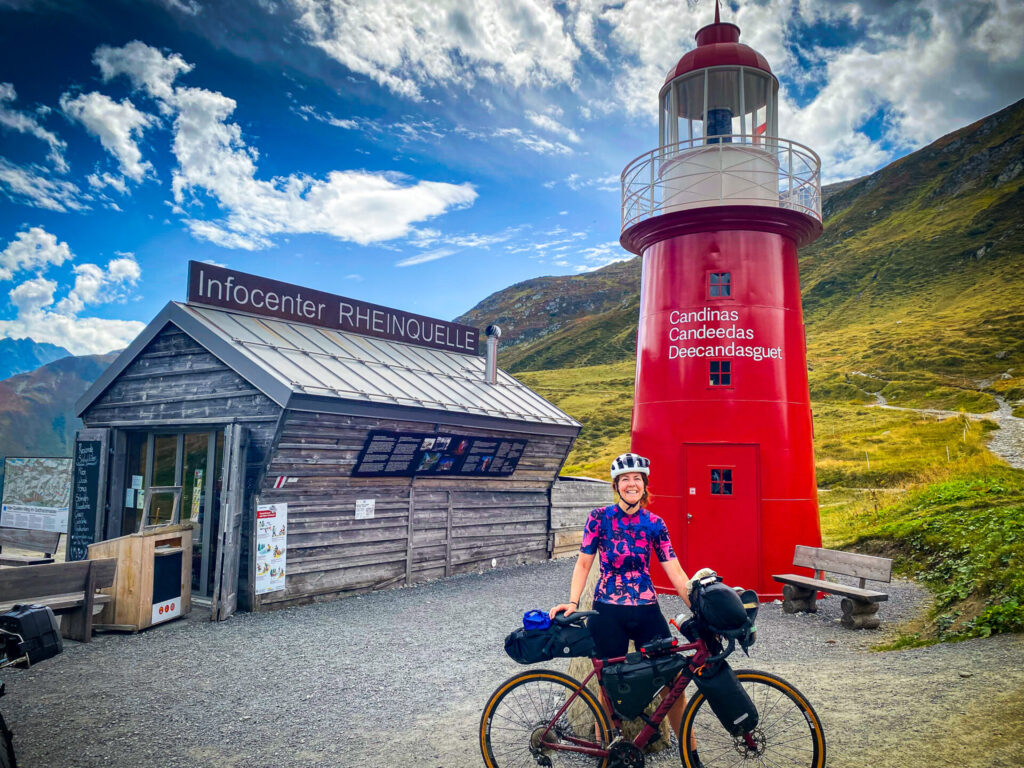
Kayaking as a start
My bikepacking adventure in Switzerland begins a stone's throw from the Rheinschlucht, the Grand Canyon of Switzerland. Before boarding my heavily packed gravel bike, we had a fantastic kayaking adventure here on the 'white waters' of the Rhine with a group of women. For two days, we sailed along the Rhine past high white cliffs and impressive stone formations. So if you want to discover other sports besides cycling, book an unforgettable whitewater experience at Kanoschule Versam And ask for Dutch guide Maud!
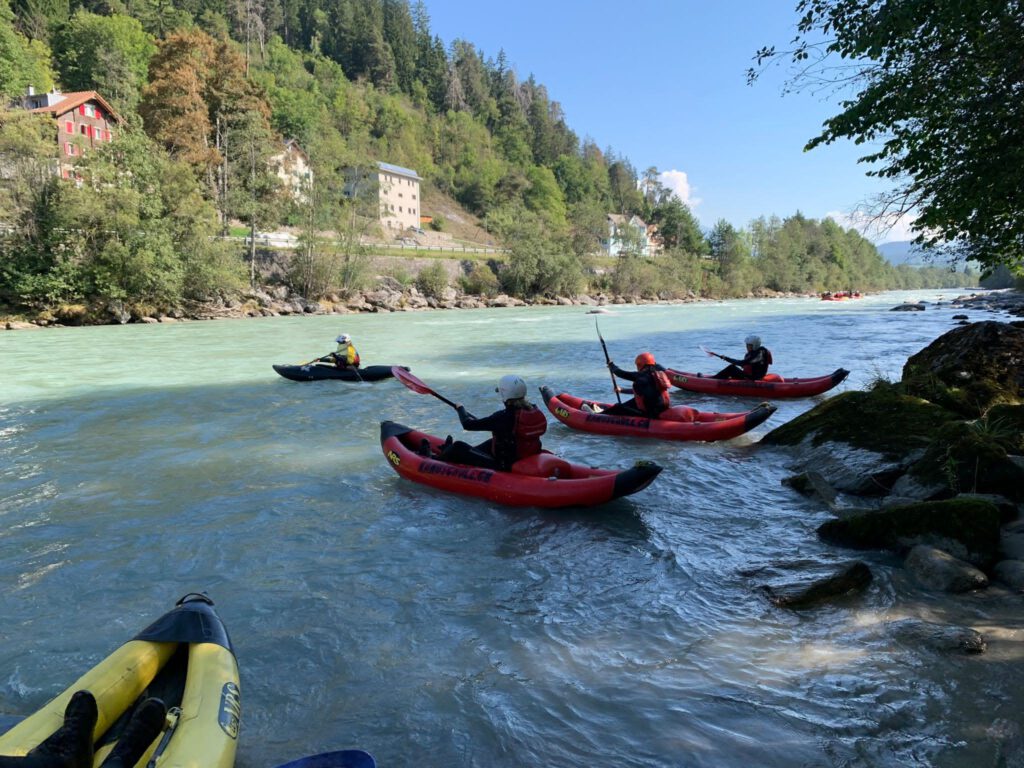
Magical camping in Alpine valley
The first stage of my bikepacking trip is a tough and beautiful route of almost 50 kilometres and 1000 altimeters. Over beautiful gravel paths, I cycle mainly along the Rhine. The first kilometres along the river are mostly in the shade of tall trees, which is no punishment with this late summer weather. The route meanders along the river and goes up and down, before after about 30 kilometres the first really steep climb starts with sometimes gradients between 10 and 12%. A short descent is followed first by a killer of a climb to Disentis/Müster with even 14% and then a long, more gradual climb to Sedrun. There I cycle to one of the very best campsites for my first night's stay: camping Viva. The young owner is incredibly friendly, the food and homemade cake incredibly delicious, and the views are magical. I almost regret having to move on after 1 night of camping.
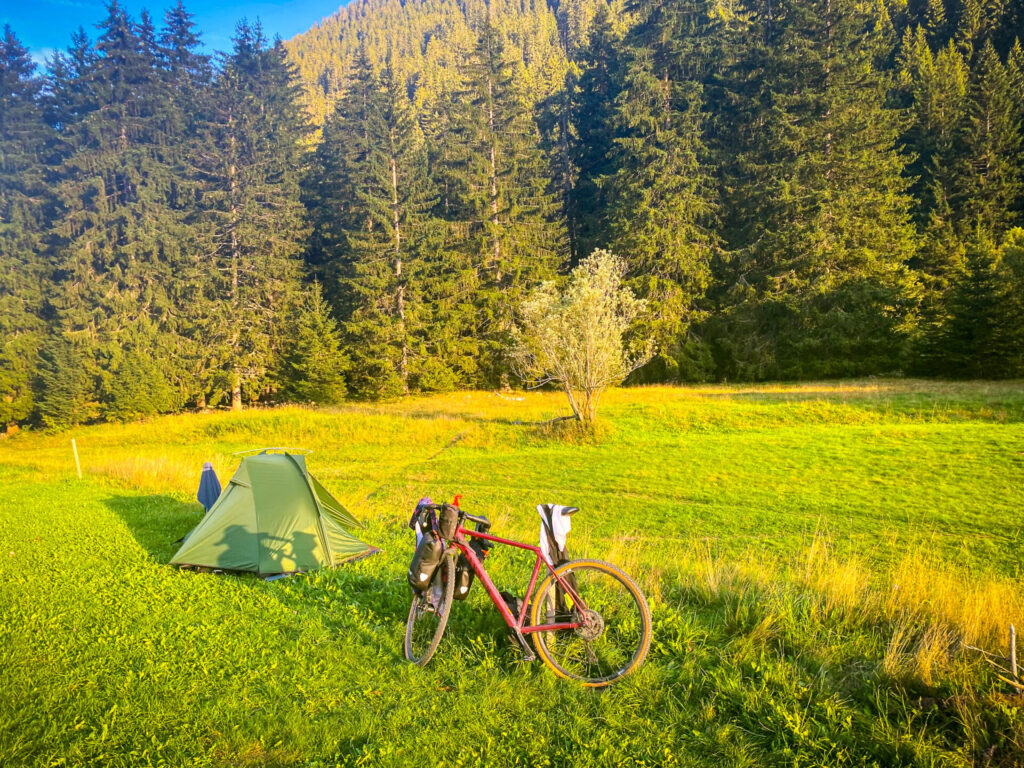
Climbing mountains with packs
After a cold night and thus a lot of condensation, the first thing is to wait patiently until the sun warms the valley and I can let the tent dry. Then I pack everything up again to start the next stage. Today there are two Alpine passes on the programme, the Oberalppass and the Furkapass. But first things first, let's tackle that first Alpine giant first. Cycling in the mountains is, of course, serious business anyway. Climbing mountains on a bike with full packs is really next level. Admittedly, I have been exercising a lot all year and have even taken on a trainer.
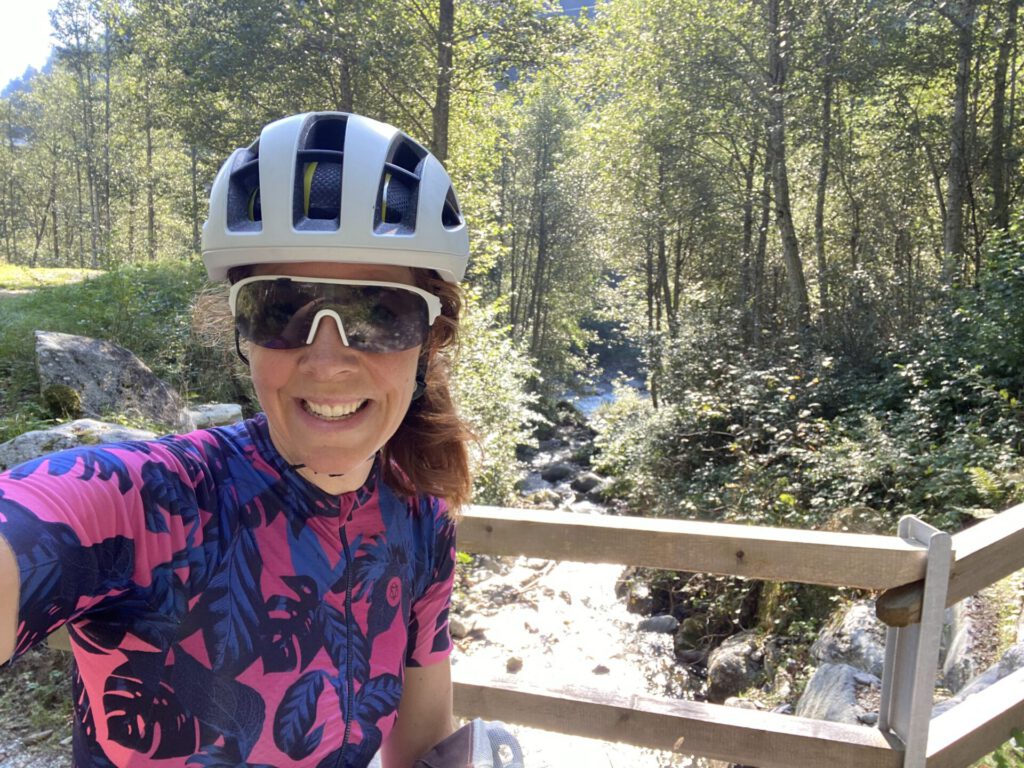

Cycling as art
But this is really an art. Finding a pace where you don't shoot into the red. Allowing yourself a breather and a drink every now and then. And not caring at all about your speed. Slowly I approach the Oberalppass and start the climb. Winding hairpin bends. Not letting that steep stretch in the distance scare you off. Getting your heart rate back under control after a weirdo in a car scares the shit out of you with his horn. Being in the now and not thinking too much about how long, how many more altimeters. And then suddenly there you are. At an altitude of 2044 metres. On top of the Oberalppass. BAM. I did it.

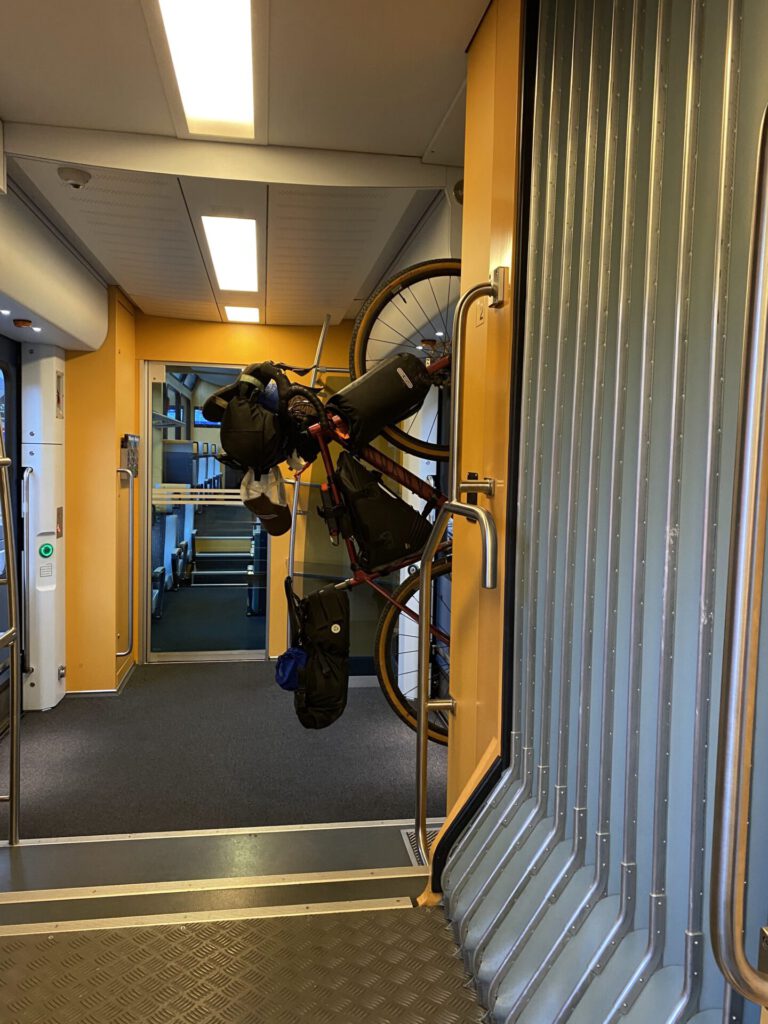
Thunderstorms and (er)knowing your limits
Once atop the Oberalppass, where the Rhine rises, I am kindly welcomed by three Dutch motorcyclists. I put the Oberalppass stamp on my wrist, pose by the lighthouse and then let myself be treated to a big piece of Swiss cake. Meanwhile, the Dutch regularly check their phones and in the distance, as thunderstorms are on the way. Dark, threatening clouds hang between the mountain peaks to the west.
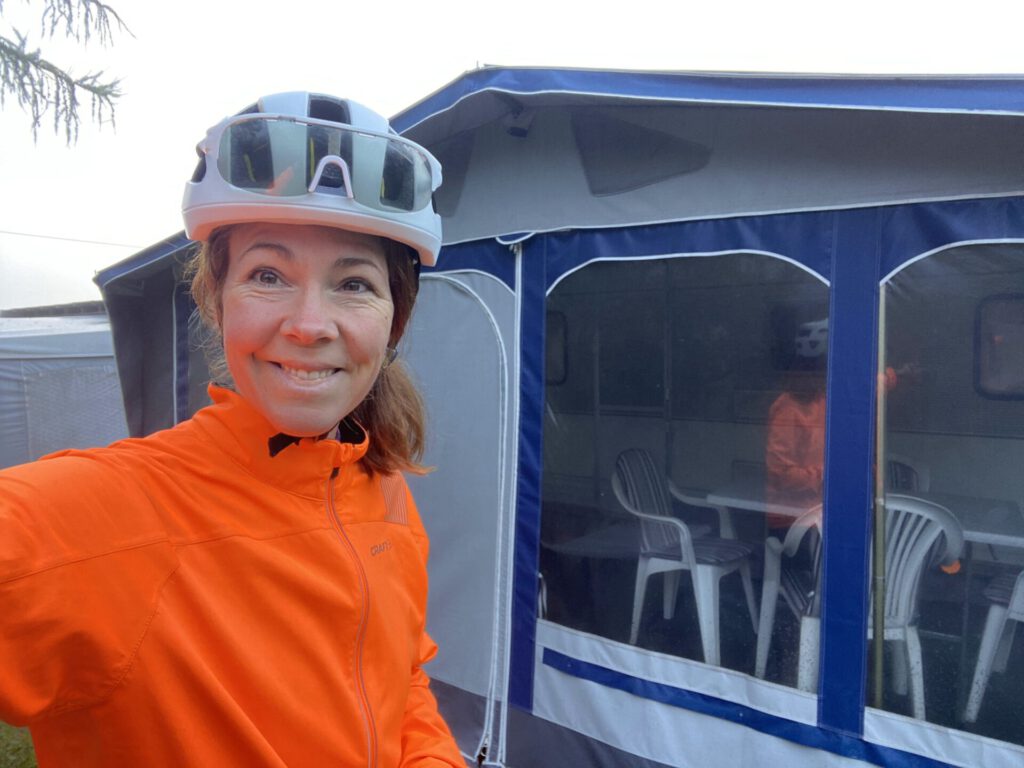
I know: the next pass is actually waiting there. The famous Furka pass. Another I know how many altitude metres with all those heavy bags. And then probably in the pouring rain and with thunder and lightning. It has been enough, I decide. I don't need to prove myself anymore. This is all tough enough. After the cake, I say goodbye to the bikers and carefully descend to Andermatt. There I cycle to the train station, and book a train ticket to Rickingen. In Rickingen, I find a campsite with a dated caravan where I can stay for two nights. This is because the next day is also forecast to be incredibly rainy. The tent stays packed, and while thick showers rumble on the roof of the caravan, I grin contentedly. Sometimes knowing your own limits is a lot braver than just trudging on.
Hiking in the mountains is also a sport
Once you get into the rhythm of moving every day, on a rest day you don't just want to read books with your legs up. And while cycling in the rain is not my thing, I have less of a problem with that with hiking. So I put on a rain jacket and my Teva sandals and find a nice hiking route from the campsite. Hiking in the mountains turns out to be a sport too. I make a beautiful trip of over 11 kilometres with 560 altitude metres, with the highest point being 1780 metres. Completely soaked and with blisters on my feet, I return to the campsite. Tired, but satisfied. Tomorrow I can swap the buggy for my steel steed again.
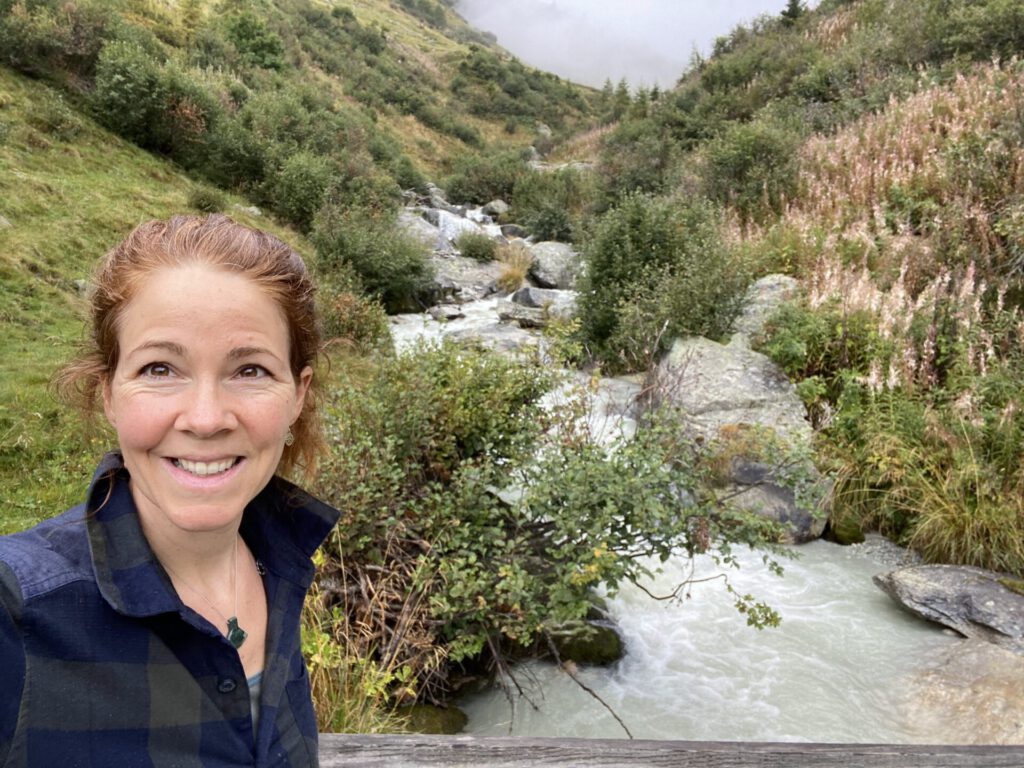
Explorer in the Binntall
On the advice of Lillie Rumpf (Cycling Heidi), I cycle the next day from Ritzingen to Brig and from Brig take the train and bus to Villars-sur-Olon, where I will gravel with Lillie the next day for a day without luggage. According to Lillie, the part from Brig is a lot less beautiful. Just before Steinmatten, the route suddenly sends me sharply to the right, and an unpaved descent begins, one wonders if it is meant for cyclists. Braking, walking and holding my breath, I reach the lowest point of this gorge. Here, the route crosses the wildly roaring Binna River with a bridge. At this spot, I really feel like an explorer on a bicycle. There is no one to be seen for miles around, I am really all alone here. This place is truly breathtakingly beautiful.
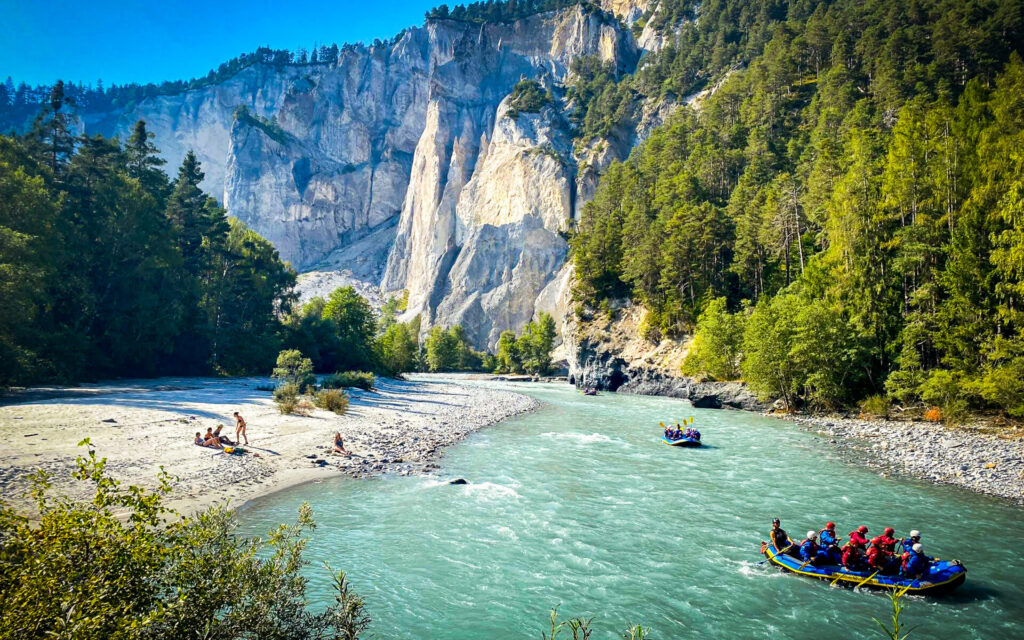
Digging with Cycling Heidi
At the invitation of Alpes Vaudoises, I get to swap the tent and sleeping mat for a lovely bed in Villars-sur-Olon for two nights. The heavy bags stay off the bike for a day and I make a beautiful gravel tour with Cycling Heidi (Lillie Rumpf). Among other things, we climb the Col de la Croix. You can read more about that ride here: Gravel in the Alpes Vaudoises: a fantastic Swiss Adventure.

Vineyards and Lake Geneva
Time for the last stage. I packed the bags again and loaded them onto my bike. This day starts with a descent from Villars-sur-Olon to Aigle, where I make a stop at the UCI World Cycling Centre. I then slowly leave the high mountains behind and cycle via Lake Geneva and past beautiful vineyards to my final cycling destination: Lausanne. From Lausanne, I will then take the train to Basel, where I will sleep one more night before travelling back home. It's over. My cycling tour of Switzerland. Fewer kilometres, fewer altimeters and less camping than I had envisaged beforehand. But no less impressive. I take the most beautiful places with me in my heart. And I am proud of myself. Especially at those moments when I dared to opt for a little more comfort. Because the adventure still feels just as grand.
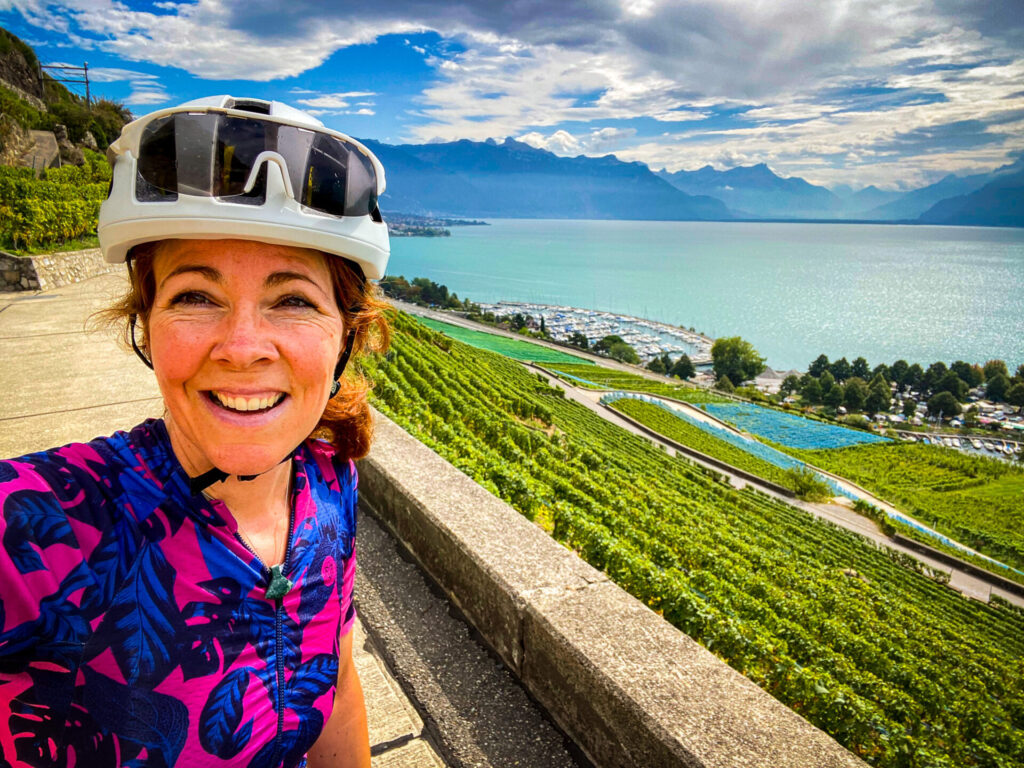
Travel overview: stages and overnight stops
Day 1: Ruschein - Rueras Sedrun
Overnight: Camping Viva https://www.campingviva.ch/galerie
Day 2: Rueras Sedrun - Ritzingen (up to Andermatt - then train)
Overnight: Old Caravan (mobil home) at Camping Brigga: https://www.campingbrigga.ch/
Day 3: Ritzing
Route Hike from Brigga campsite in Ritzingen:
Day 4: Ritzingen - Brig
Overnight: Villars Lodge https://www.villarslodge.ch/
Day 5: Digging with Cycling Heidi from Villars-sur-Olon
Overnight: Villars Lodge https://www.villarslodge.ch/
Day 6: Villar-sur-Olon - Lausanne - Basel
Overnight: Basel Backpack https://baselbackpack.com/
Trip
I travelled by night train from Utrecht to Basel, carrying my bike in a lightweight bike bag so I did not have to buy a separate ticket for the bike. I carried my bikepacking bags in a sleeve for large backpacks. That's some lugging, but it went pretty well. From Basel, I took the train to Chur, and from Chur to Ilanz. Especially the part from Chur to Ilanz is breathtakingly beautiful, as the track runs through the Rheinschlucht.
On the way back, I took the train from Lausanne to Basel. There I spent the last night in Basel Backpack, close to the train station https://baselbackpack.com/. The next day, I took the day train from Basel back to the Netherlands.
On all Swiss trains, you can easily take your bike, and many buses even have bike hooks on the back of the bus. You pay around 15 Swiss francs to take your bike on the train, and some trains require you to reserve a seat. In a pannier or bike case, your bike can be taken for free.
